Elevation Gain: 1,939m
Distance: 32.6km
Total Time: 8 hours 8 minutes
Date: June 15th, 2025
More often than not, the volcanic summits around southwest BC are guarded by engaging and interesting ascent lines. Routes can involve steep snow, mandatory rope work and thought provoking climbing. While volcanic rock is generally quite loose, there’s a certain “je ne sais quoi” about climbing it. Some of my favourite ascents have been on these old volcanic remnants including: Castle Peak, Mount Fee and Pyroclastic Peak. It was perhaps inevitable then, that an ascent up The Black Tusk would eventually come to fruition. My friend Alex had been planning to climb it for some time and we finally set a date for the weekend of June 15th.
We planned to bike up the Microwave Tower road on the north west side and save ourselves an approach up Rubble Creek. That proved to be quite lucky as the trail was suddenly closed due to cougar sightings. The added bonus was that we’d have the summit area to ourselves as the false summit is a popular objective in the summer time. Perhaps the only downside is we’d be travelling nearby hungry cougars.
On the 15th, we drove out to the Cheekye Branch 3 road and found a locked gate about 4.5km from the normal start. Disappointed, we drove back to the other side down the Cheakamus FSR and found a suspension bridge we could cross about 2km further along the road. That would at least save us 5km round trip, so off we went.
Once we linked back up the road it was a standard affair of gaining 1000m over 9km or so. Clouds kept the sun at bay and it was an enjoyable ride over all. We hit permanent snow line just shy of the end of the road, but our legs were sufficiently jelly-ified at this point. From the snow we walked up past the microwave tower and then along the tame north ridge and around to the south west aspect of The Black Tusk. Here we had been expecting snow, but we found a fully dry talus field instead.
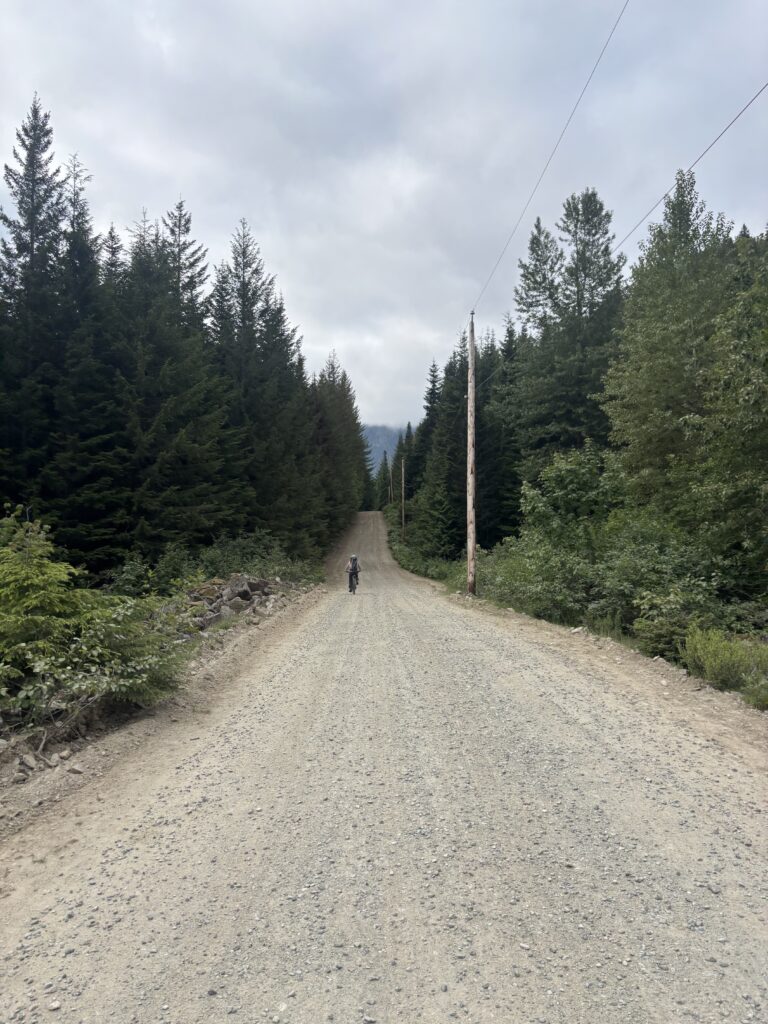
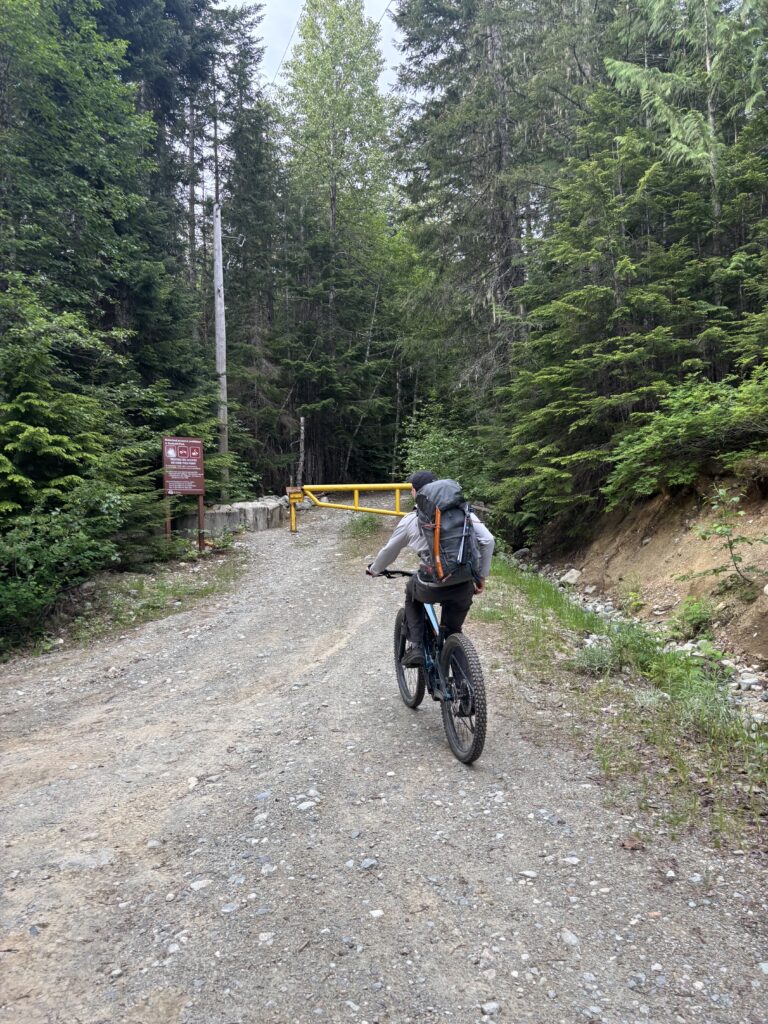
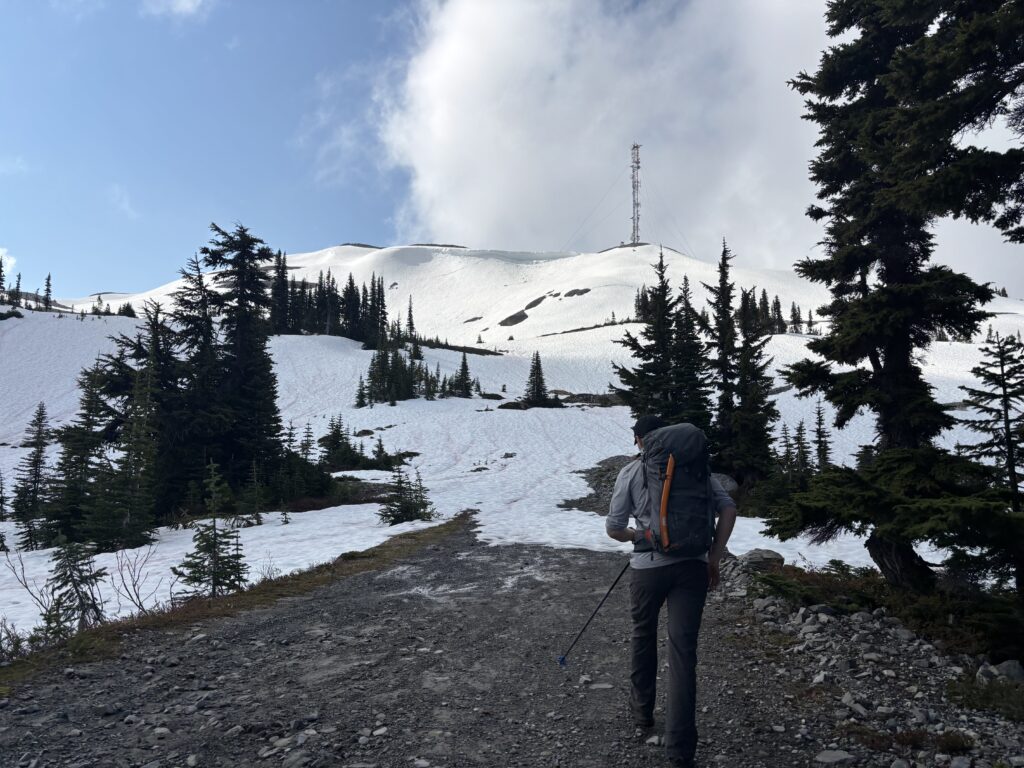
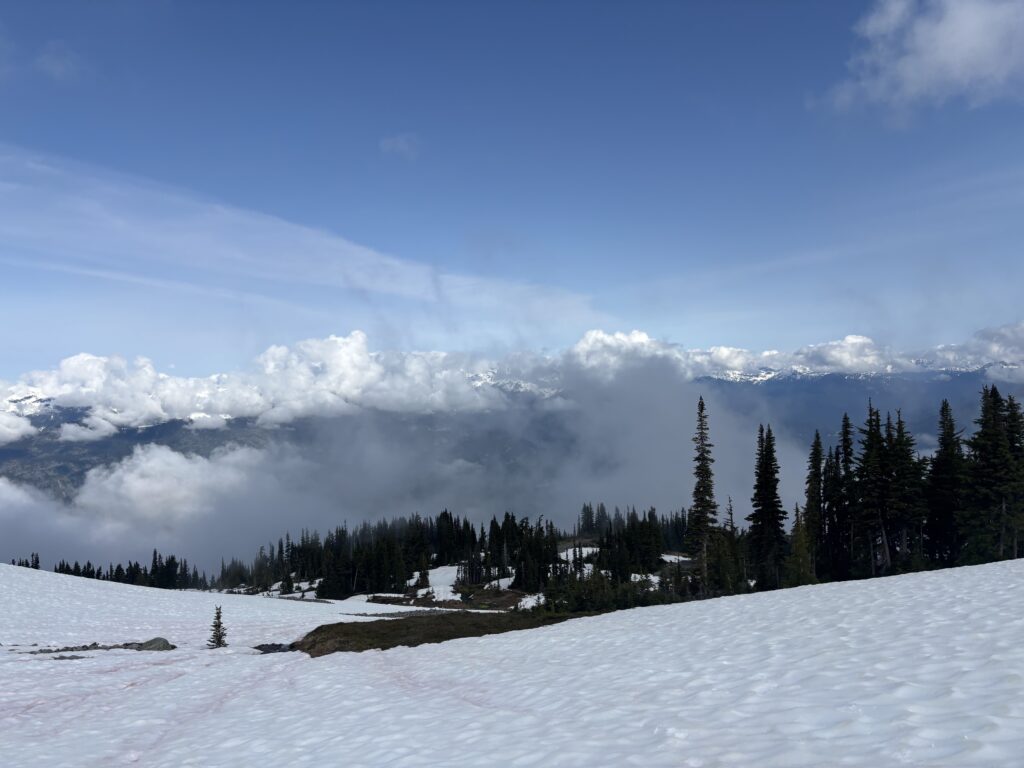

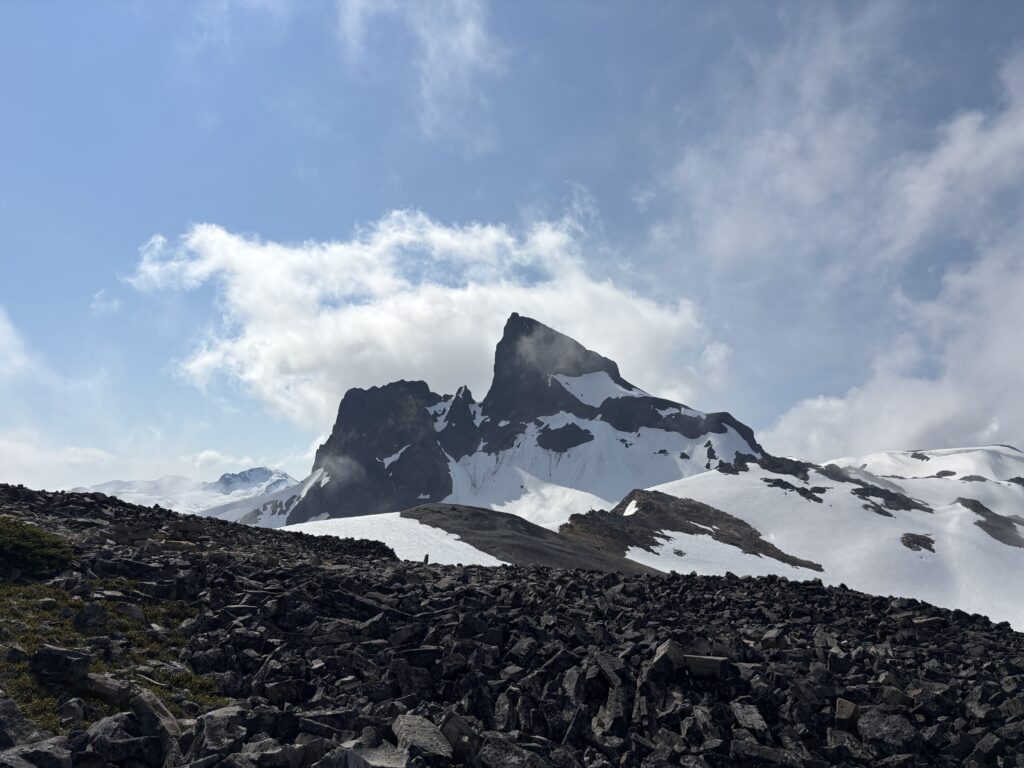
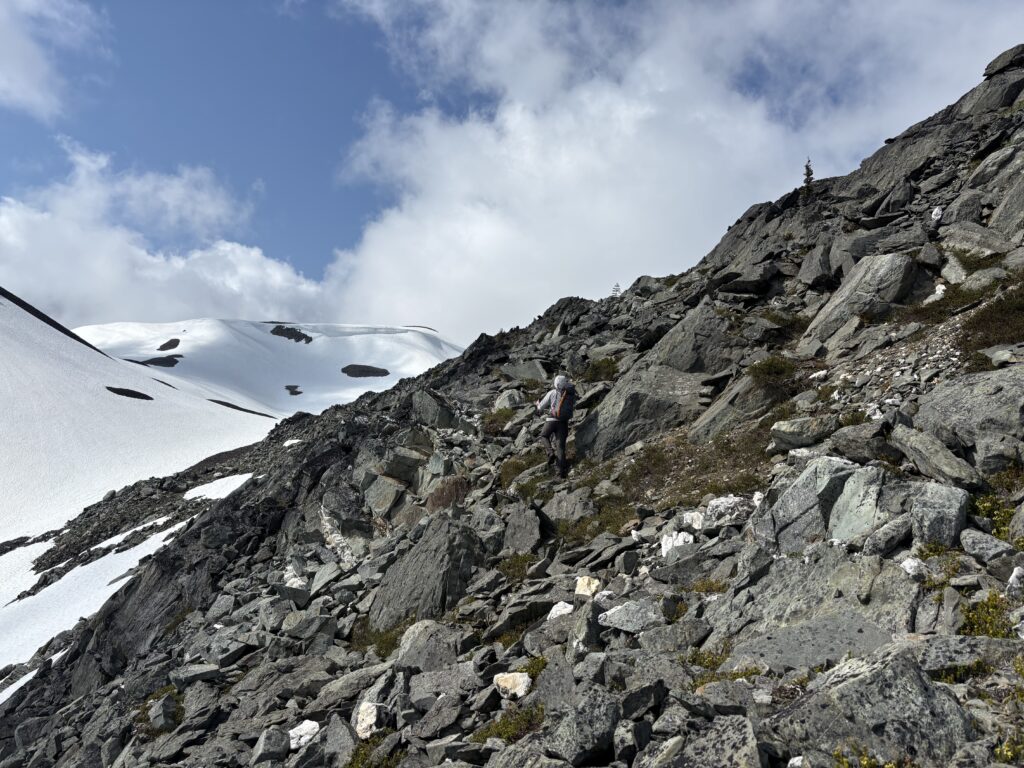
Alex and I booted up the 200 odd meters to the base of the scramble chimneys and then worked our way up to the false summit. Now we had our first good look at the infamous notch and true summit. At first it looked quite intimidating, but we hiked just west from the false summit and spotted a very reasonable looking line into the notch. The route up the true summit itself was mostly protected by a gully with one exposed section right at the top.
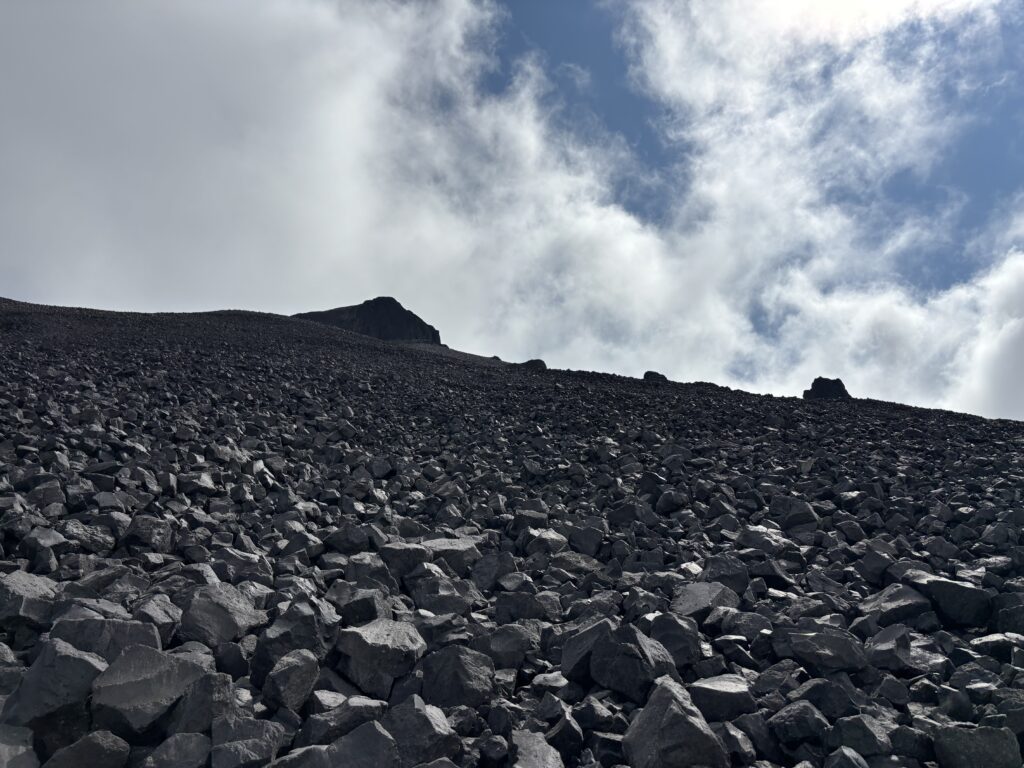
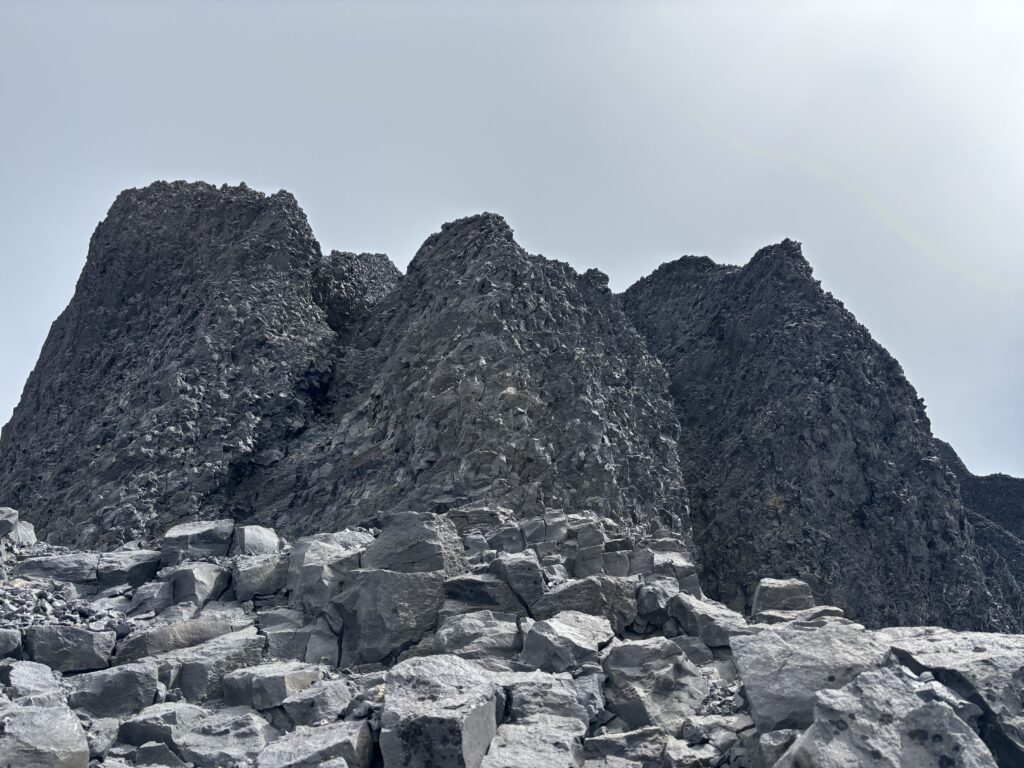
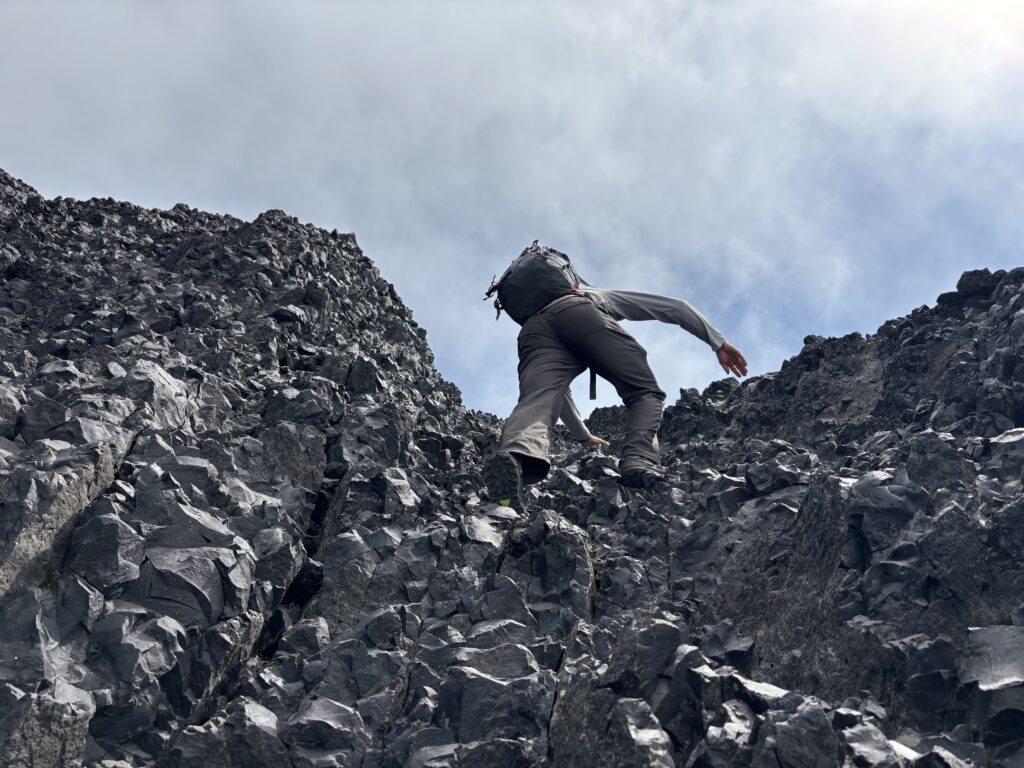

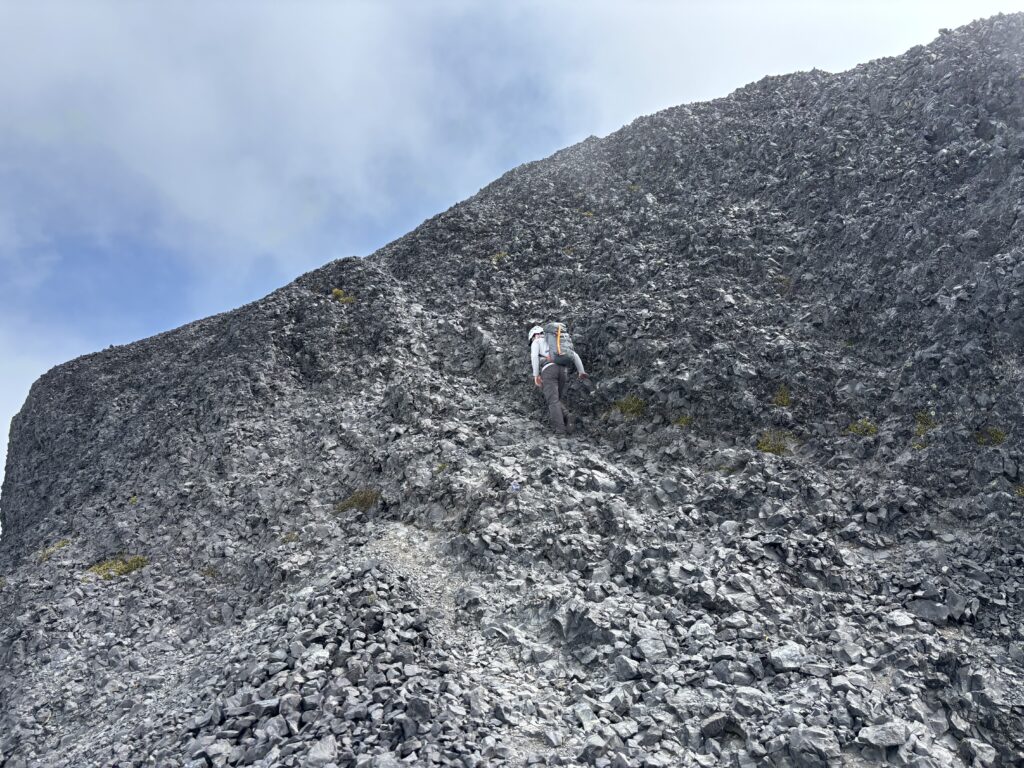
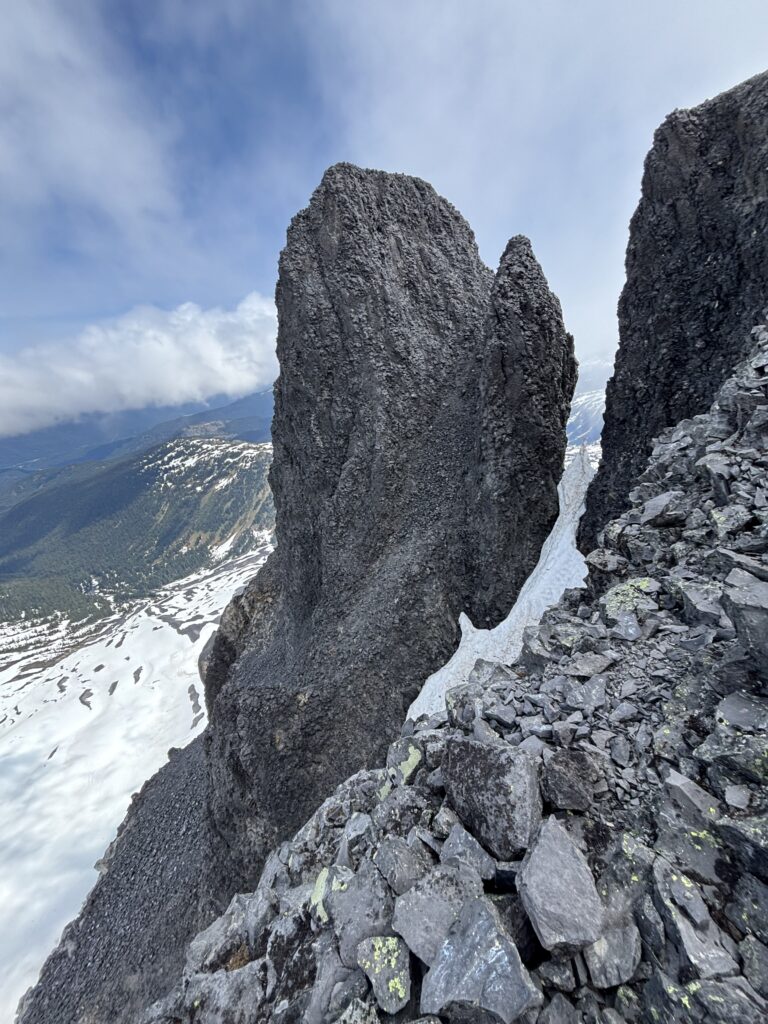
We got to work assembling a choss bollard and opted to sling two separate boulders and create an equalized double-dead man anchor. After a thorough burying under all of the boulders we could find, we were satisfied it would hold. Alex went first and we used my 60m rad line for this section fixed with a figure 8 to our anchor. We could then each ascend one line as needed on the way back. I went next and the terrain proved to be a bit deceptive. What looked quite close proved to be more than 20m of rappelling into the notch with the last section overhung.

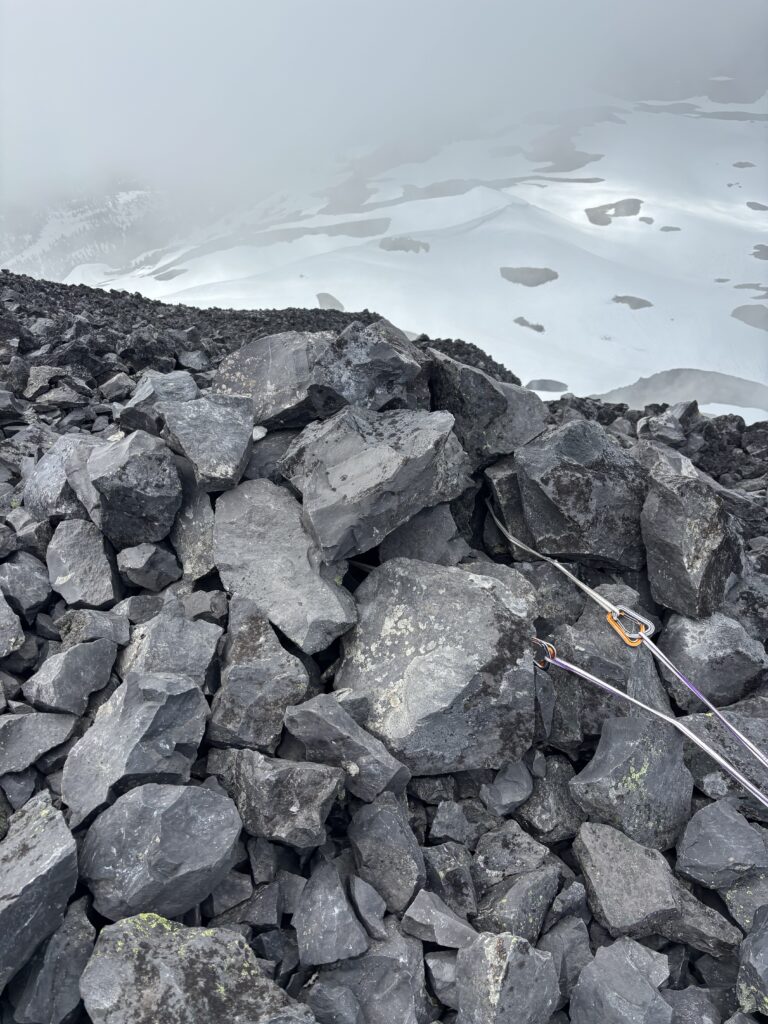
In the notch at last, we started to scramble up the gully towards the crux of the route. For a moment we debated roping up, but there wasn’t much value given the lack of protection and loose rock. I then started up the steepest bit and found the rock to be exceptionally loose. The rock felt like layers of egg shells or dinner plates ready to heave off. No move was hard, but we each took our time picking out the next most solid hand or foot placement before advancing upwards. There was one final loose bit just 2m below the summit and then the terrain eased off and we both reached the summit successfully.
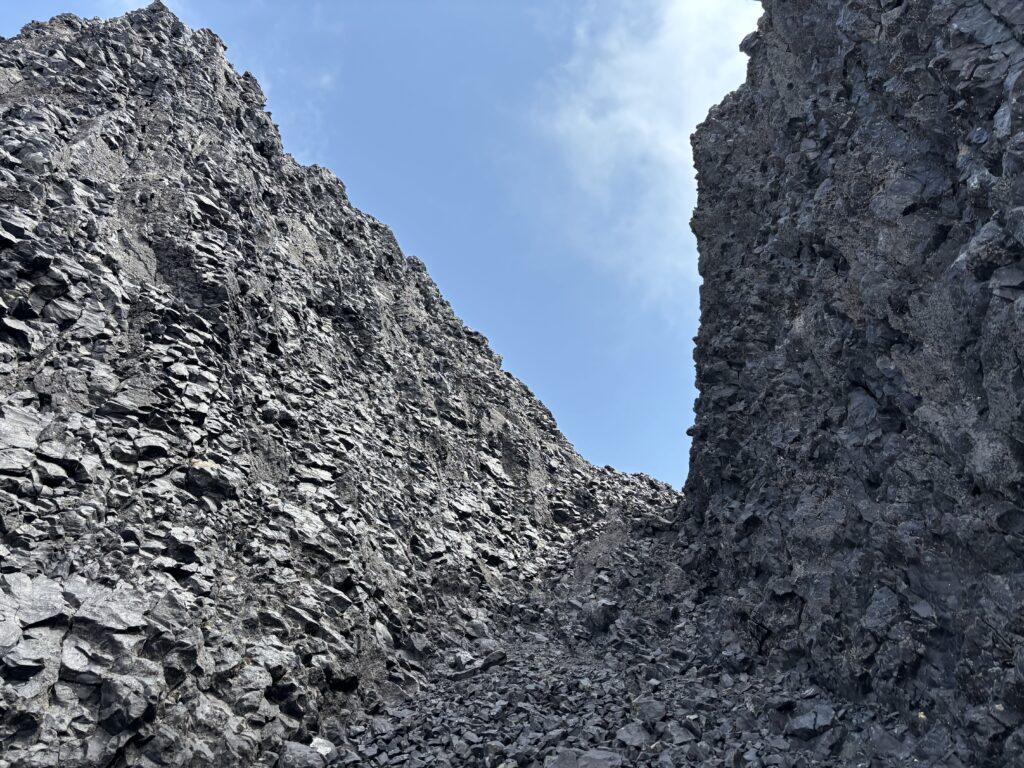
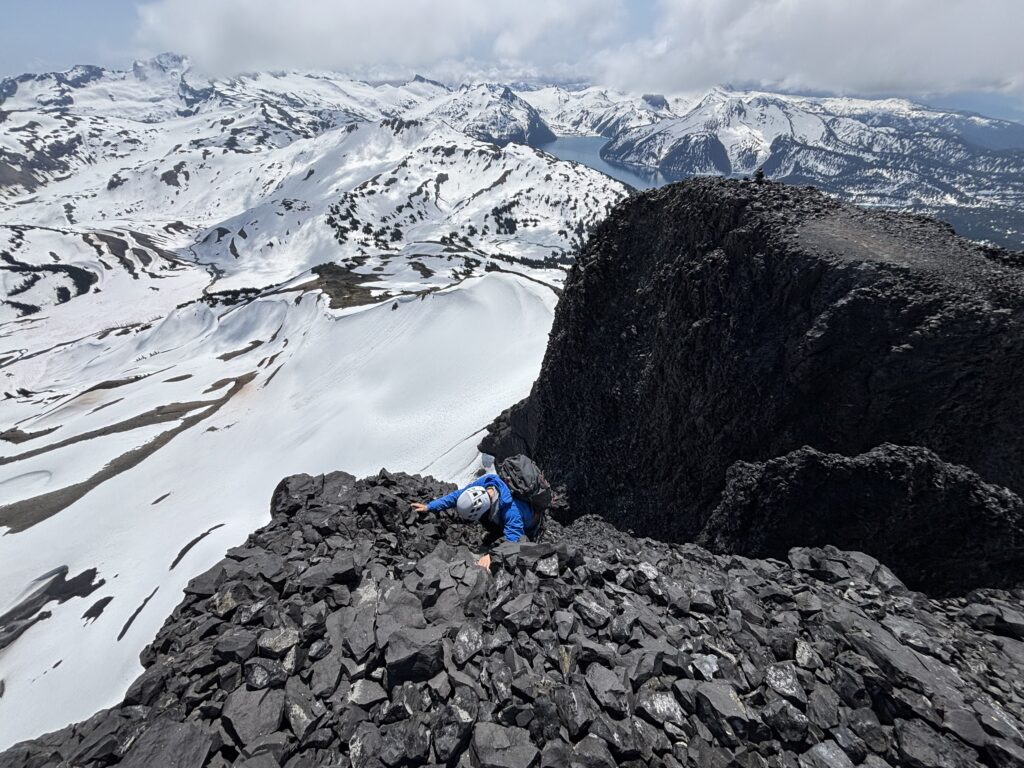
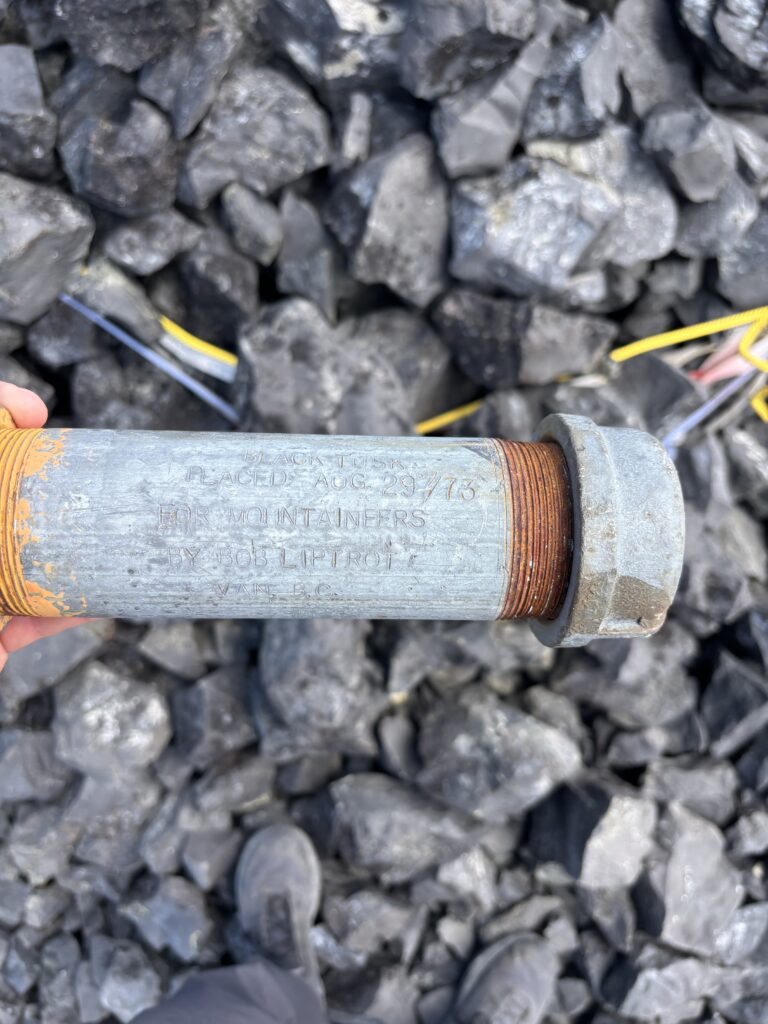
Our eyes were immediately drawn to the rappel anchor off the true summit. Old slings wrapped around 6-7m of small rocks. Despite it’s appearance our inspection revealed it was actually quite solid. The slings were too old too trust so we added our own. Unfortunately, we were a bit shy of cord and had to assemble a loop of webbing to complete the anchor. Alex rappelled first and within the first few meters sent a shower of rocks down the gully. The entrainment of choss landed on his rope and nicked one section, but we later found it was not so bad as a core shot. I went next and nearly reached Alex, before discovering the rope wouldn’t pull from the end. I scrambled up a ways and had no choice but to pull the rope while exposed to potential rock fall down the gully. With some very gentle and smooth pulls of the rope I managed to free it and then scrambled back down to Alex.
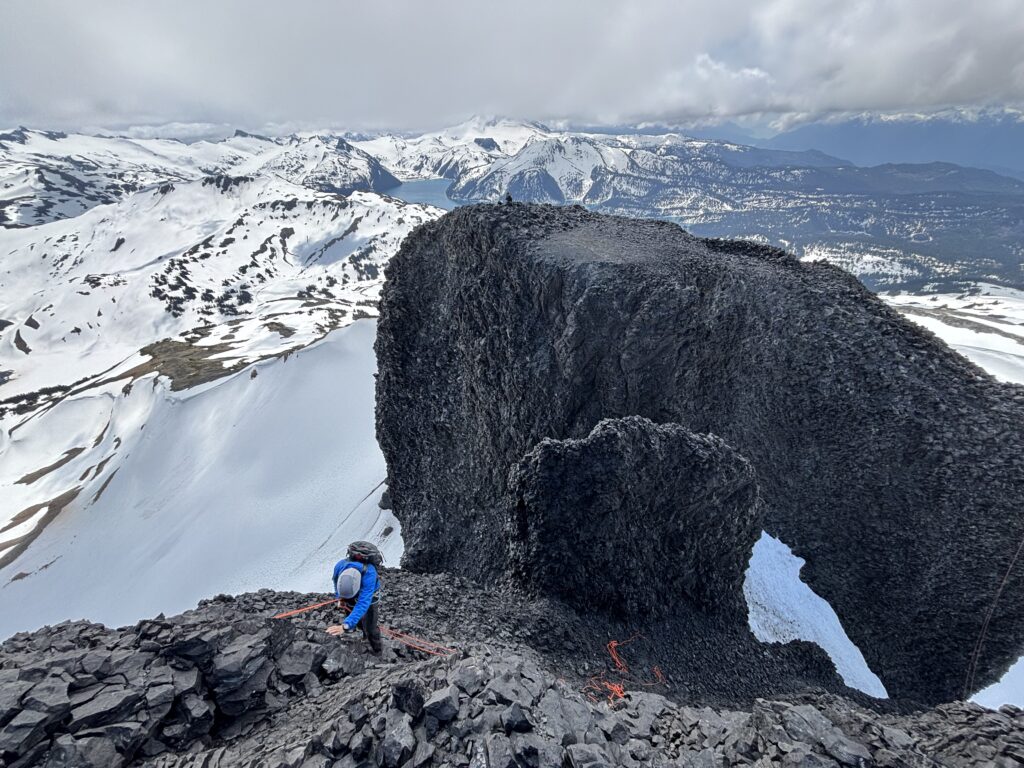
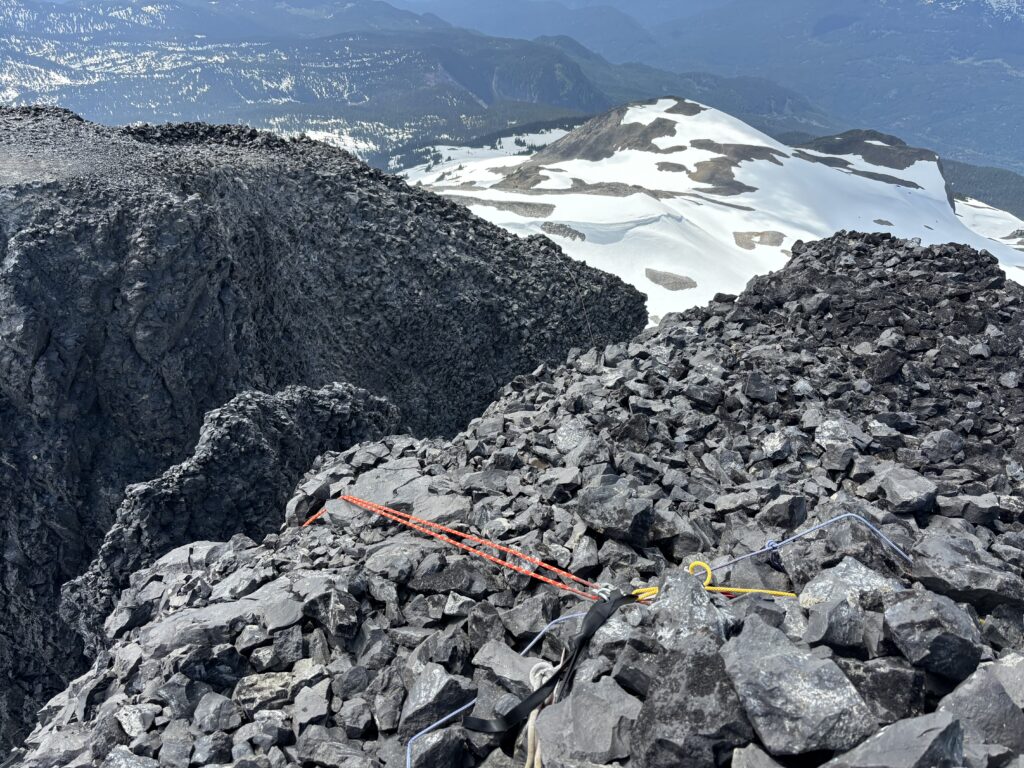
Alex got to work climbing back up and instead of going straight up he found a reasonable ramp out climber’s left up a small snow finger. Once he was at the top he put me on belay and I followed up. The ramp had quite solid rock in the end and the exit proved to be easier than anticipated. With the crux out of the way we spent some time on the false summit relishing in the views and then descended the scramble gully down to the south west face. From there it was a fun boot ski down the scree and talus and we reached our bikes not long after.
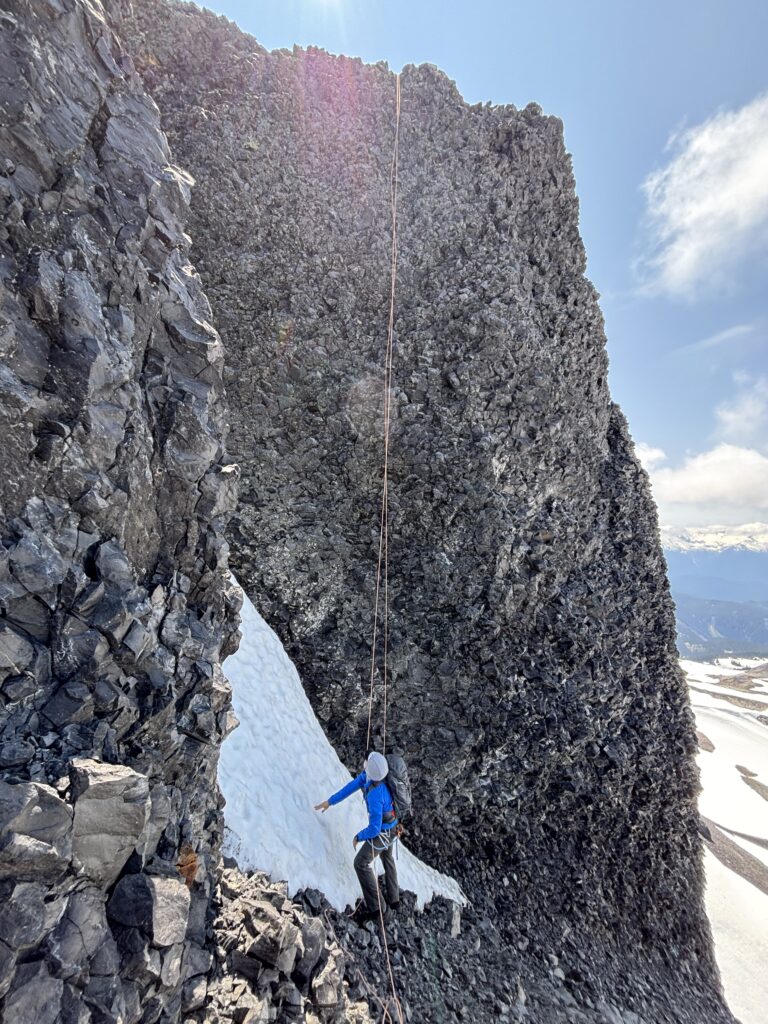
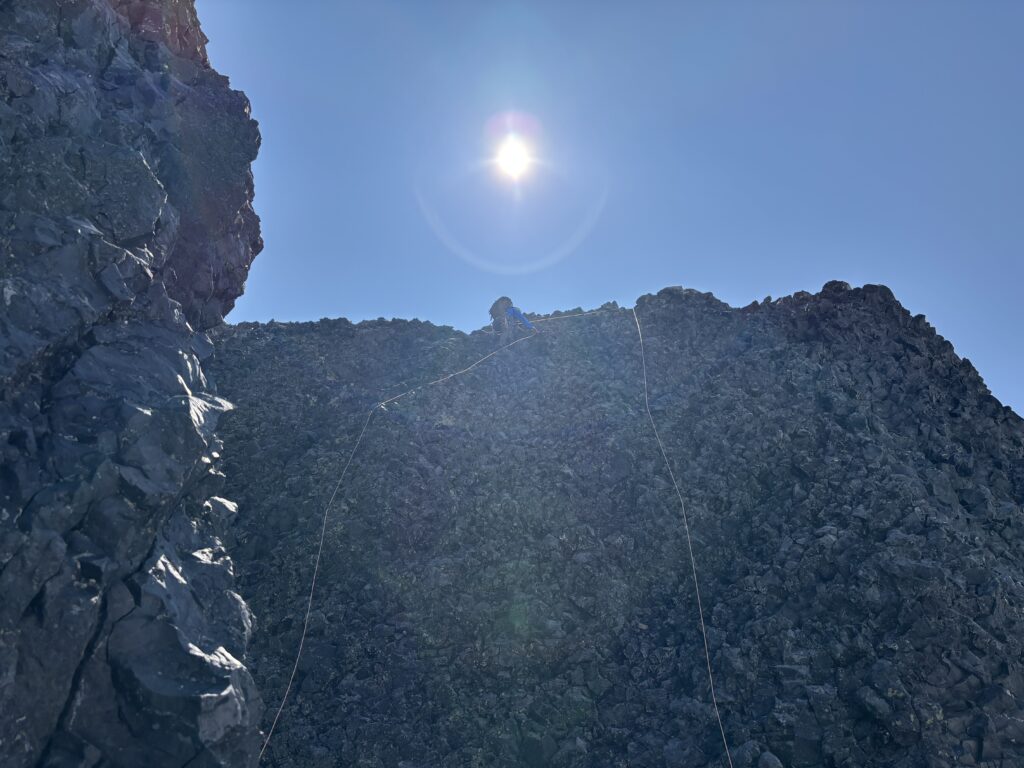
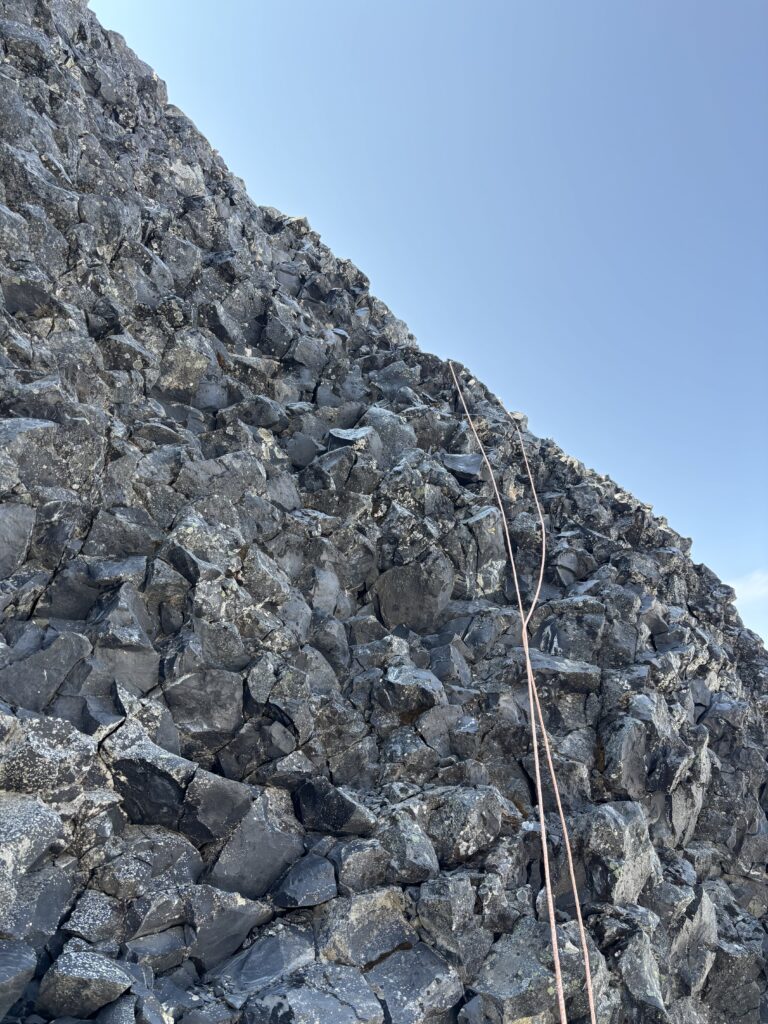
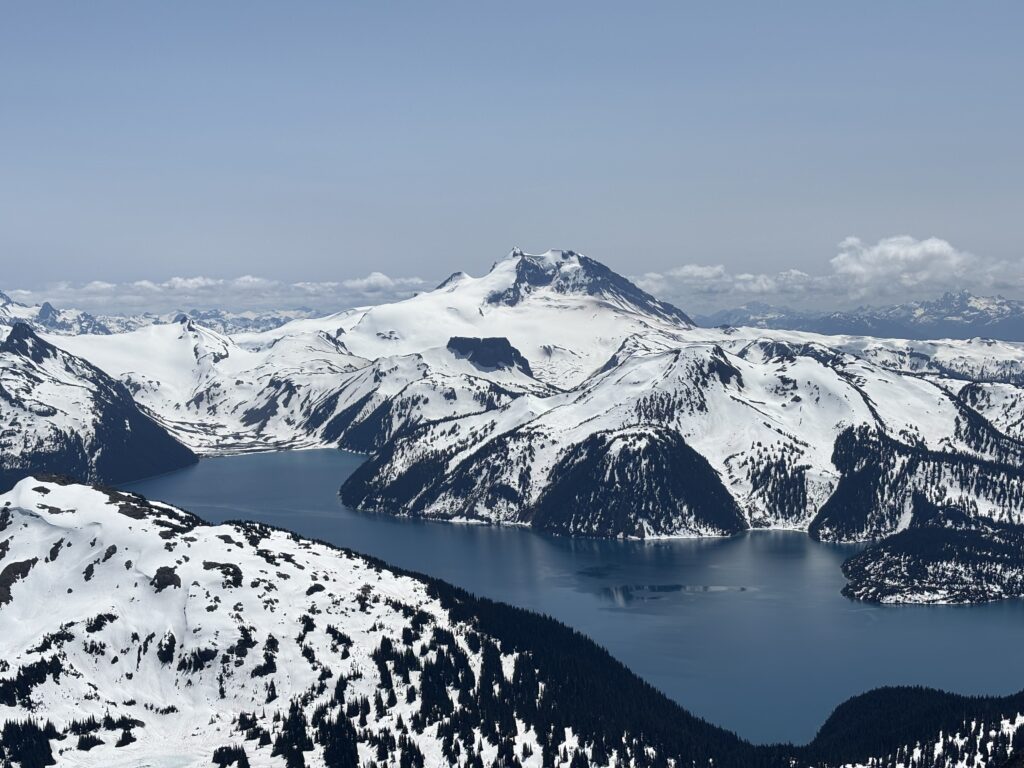
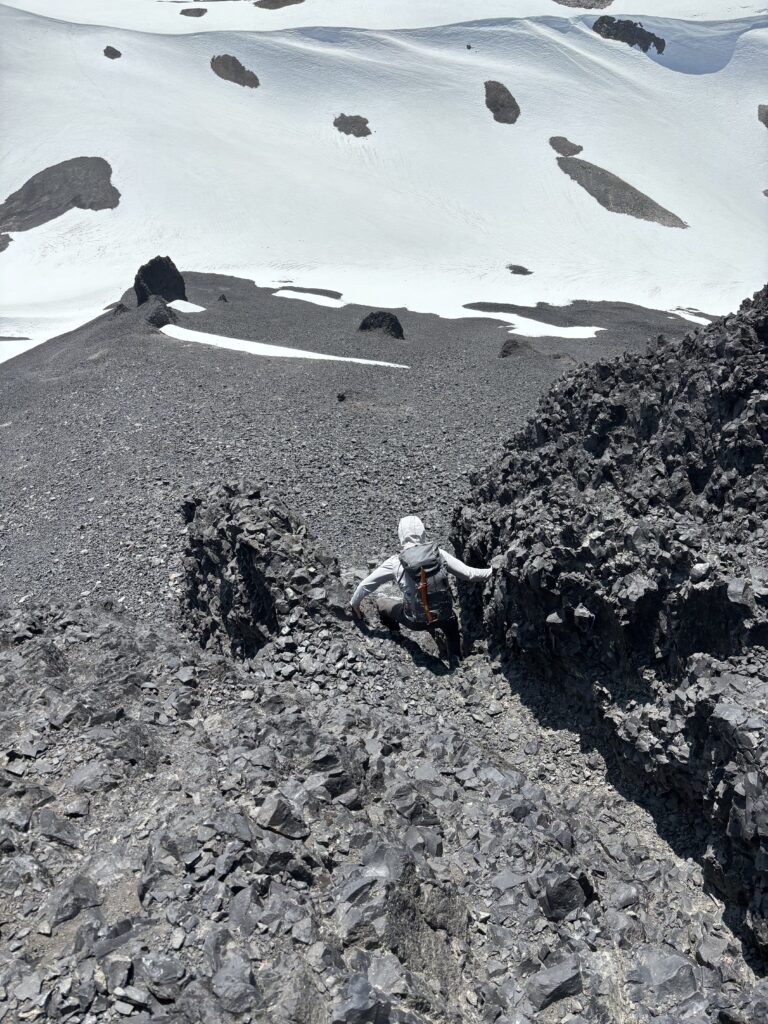
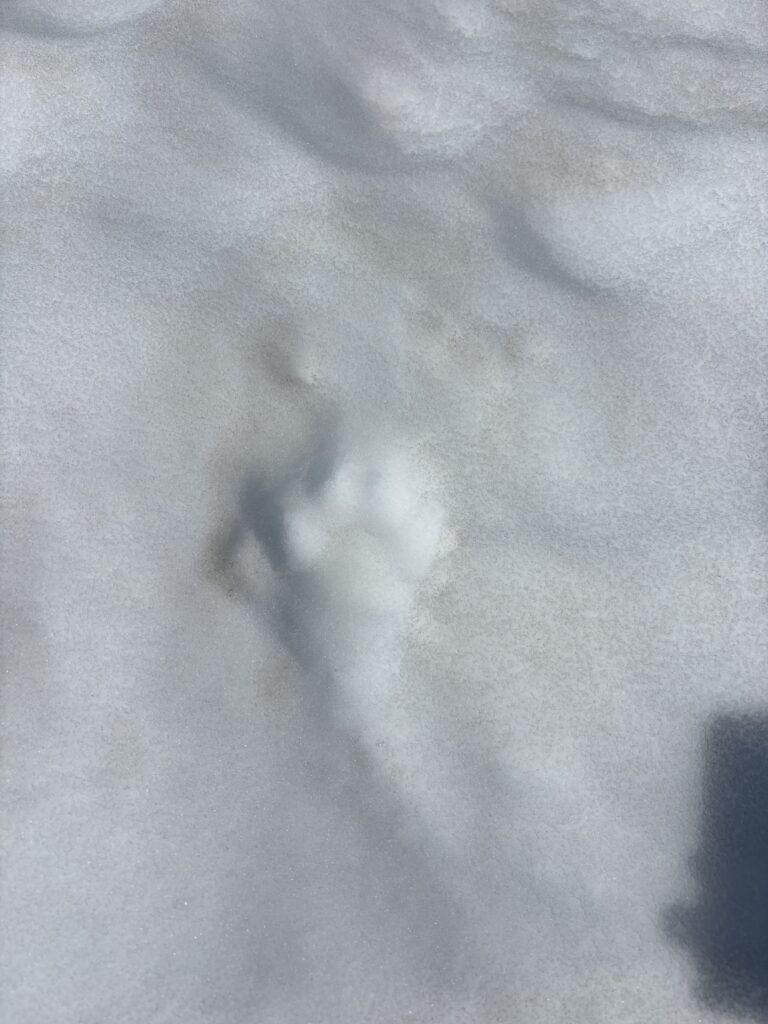
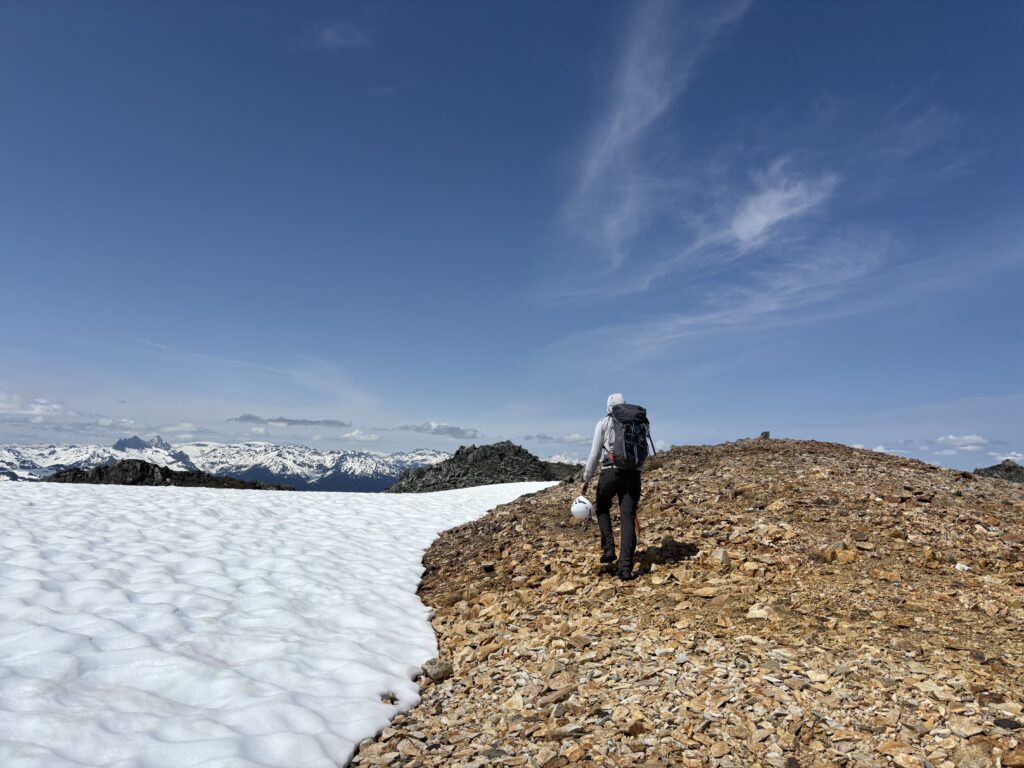
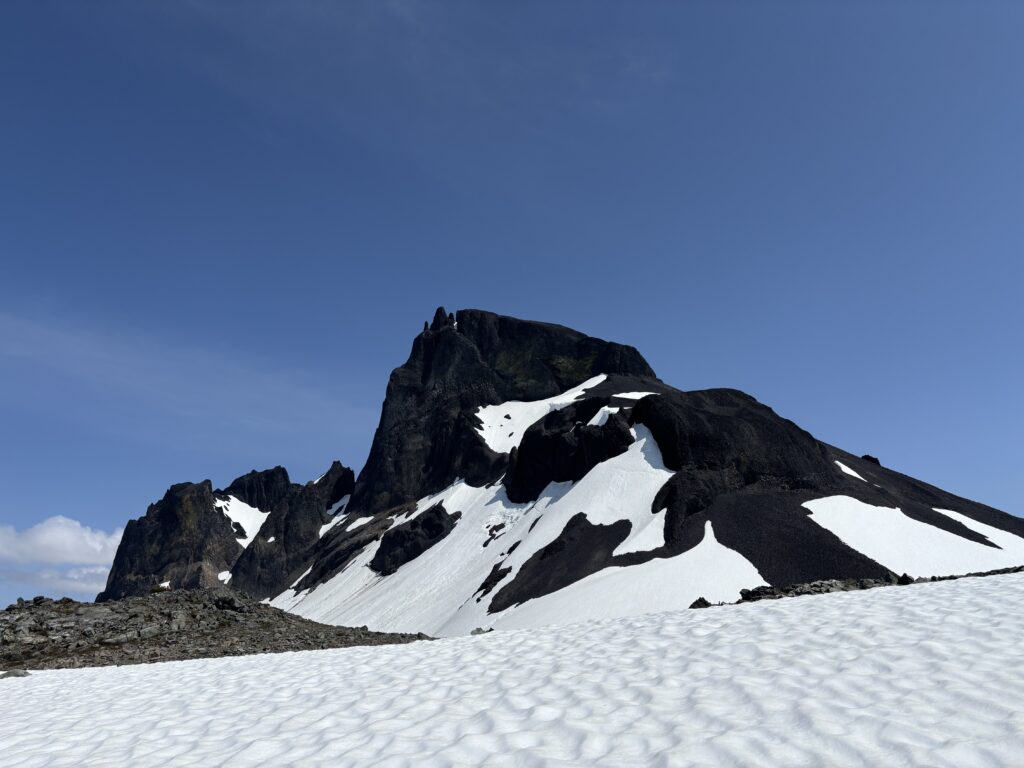
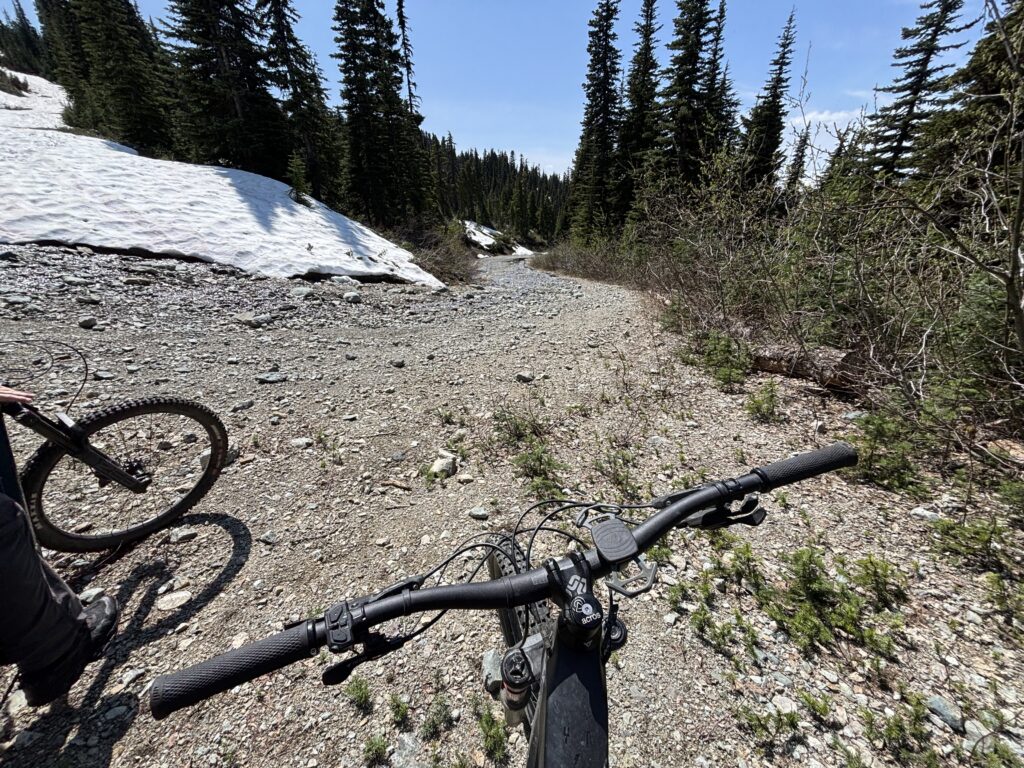
Undoubtedly the best part of bringing the bikes up is taking them down. We dispatched with 10km+ of road in under an hour and we were back in Vancouver for 6pm! Once again, the volcano’s of swbc offered a phenomenal adventure. For those thinking of their own ascent, I would suggest being very comfortable on loose rock. The climbing never exceeds 4th class, but the difficulty lies in determining which rock is safe or not to grab. With the added exposure it would feel like a spooky affair if you’re used to more solid ground.
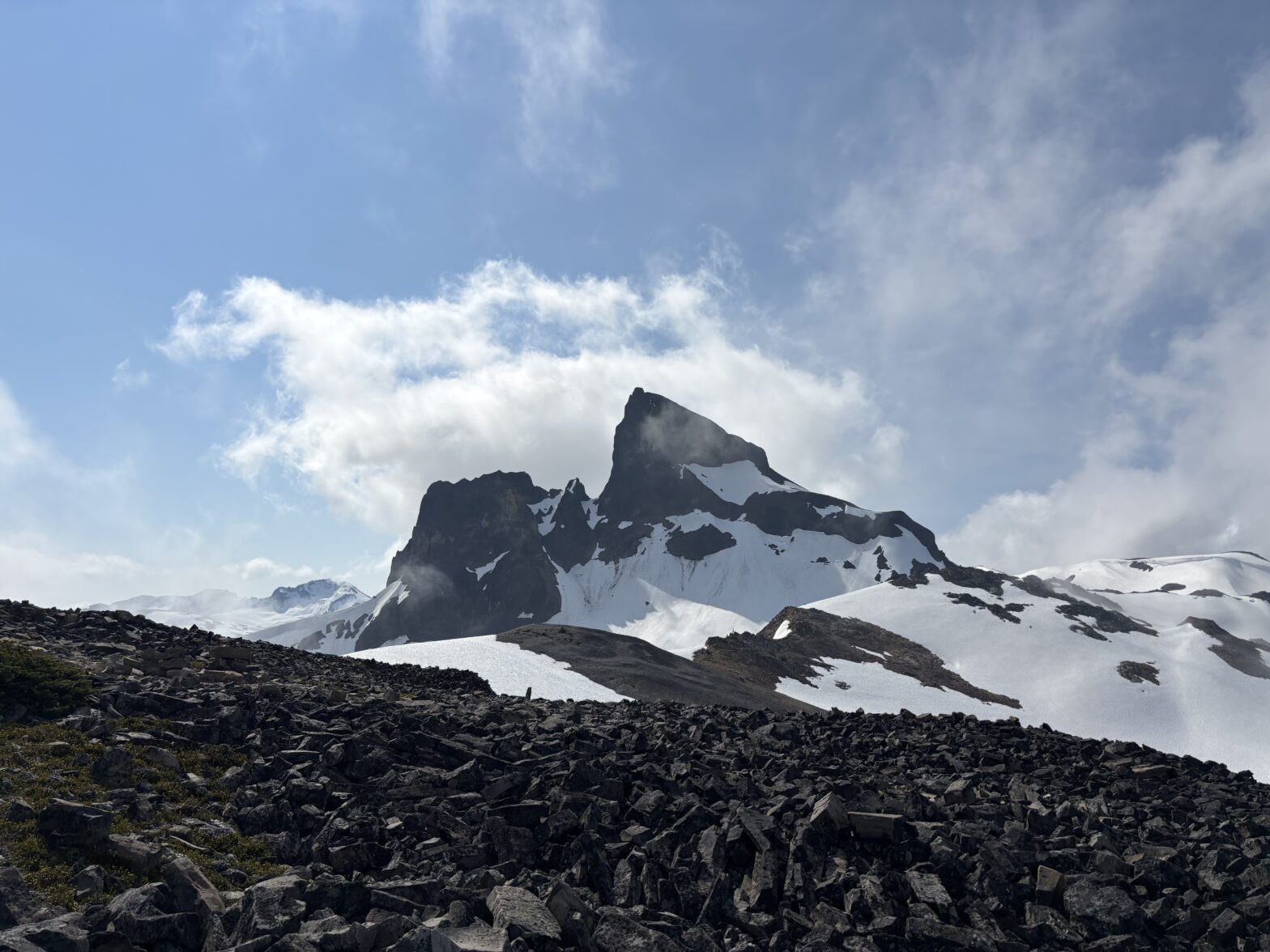
Lucky the cougar didn’t get you.